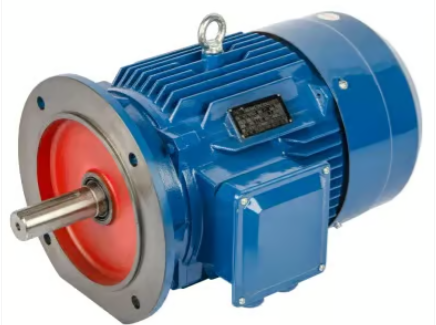Variable Frequency Drives (VFDs) control the speed of AC motors by adjusting the frequency and voltage of the power supplied to the motor. Here's a detailed explanation of how VFDs achieve this:
Basic Components of a VFD
- Rectifier: Converts AC power from the mains supply to DC power.
- DC Bus: Stores and smooths the DC power, providing a stable DC link.
- Inverter: Converts the DC power back into AC power with adjustable frequency and voltage.
- Control System: Manages the operation of the rectifier and inverter, and allows user inputs for speed and torque control.
How VFDs Control Motor Speed
-
Rectification:
- The VFD receives AC power from the mains supply.
- The rectifier converts this AC power to DC power. This conversion is achieved using diodes or thyristors, which allow current to flow in one direction, creating a pulsating DC output.
-
DC Bus:
- The pulsating DC from the rectifier is smoothed and stored in the DC bus.
- Capacitors and inductors are typically used in the DC bus to filter out ripples and provide a steady DC voltage.
-
Inversion:
- The inverter section of the VFD converts the DC power back to AC power. However, unlike the fixed-frequency AC power from the mains, the inverter can produce AC power at any desired frequency and voltage.
- The inverter uses power electronic devices like insulated-gate bipolar transistors (IGBTs) or metal-oxide-semiconductor field-effect transistors (MOSFETs) to switch the DC power on and off at high speeds, creating a pulse-width modulated (PWM) AC signal.
-
Pulse-Width Modulation (PWM):
- PWM is a technique used to create a variable voltage and frequency output from the inverter.
- By adjusting the width and frequency of the pulses, the VFD can control the average voltage and frequency supplied to the motor.
- The motor responds to the average voltage and frequency, allowing for precise speed control.
-
Control System:
- The control system allows users to set the desired motor speed, torque, and other parameters.
- It monitors the motor's performance and adjusts the inverter's output to maintain the desired operating conditions.
- Feedback from sensors (like encoders or tachometers) can be used in closed-loop systems to provide precise control.
Detailed Operation
-
Frequency Control: The speed of an AC motor is directly proportional to the frequency of the AC power supplied. By varying the frequency, the VFD directly controls the motor speed. For example, decreasing the frequency reduces the motor speed, and increasing the frequency raises the motor speed.
-
Voltage Control: To maintain efficient motor operation and avoid overloading, the VFD also adjusts the voltage in proportion to the frequency. This relationship is known as the V/f (voltage-to-frequency) ratio. Proper V/f ratio maintenance ensures that the motor produces the correct torque across the speed range.
-
Acceleration and Deceleration: VFDs can control the rate of acceleration and deceleration by gradually increasing or decreasing the frequency. This smooth control reduces mechanical stress on the motor and connected equipment.
-
Dynamic Braking and Regeneration: Some VFDs have braking choppers and resistors to dissipate excess energy during deceleration (dynamic braking). Others can return energy to the power supply (regenerative braking), improving energy efficiency.
Benefits of VFDs
- Energy Savings: By matching motor speed to the actual load requirements, VFDs reduce energy consumption, especially in variable load applications like pumps and fans.
- Enhanced Process Control: Precise speed and torque control improves process performance and product quality.
- Extended Equipment Life: Smooth starting and stopping reduces mechanical wear and tear, extending the life of the motor and connected machinery.
- Reduced Maintenance: Lower mechanical stress and optimal motor operation reduce the frequency and cost of maintenance.
In summary, VFDs control the speed of Variable Speed Ac Motors by adjusting the frequency and voltage of the power supplied to the motor. This is achieved through rectification, DC bus stabilization, inversion using PWM, and sophisticated control systems, providing precise and efficient motor speed and torque control.
